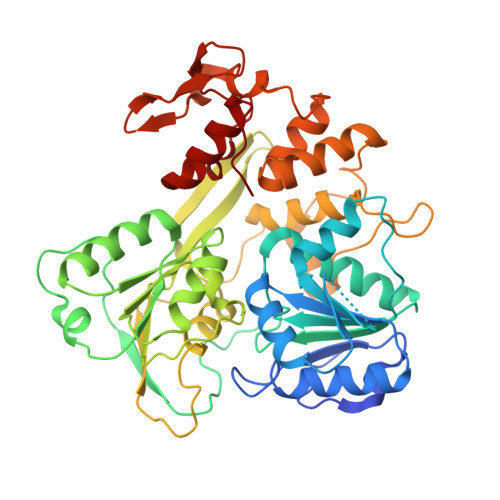Molecular mechanism of divalent-metal-induced activation of NS3 helicase and insights into Zika virus inhibitor design.
Cao, X., Li, Y., Jin, X., Li, Y., Guo, F., Jin, T.(2016) Nucleic Acids Res 44: 10505-10514
- PubMed: 27915293
- DOI: https://doi.org/10.1093/nar/gkw941
- Primary Citation of Related Structures:
5JWH, 5K8I, 5K8L, 5K8T, 5K8U - PubMed Abstract:
Zika virus has attracted increasing attention because of its potential for causing human neural disorders, including microcephaly in infants and Guillain-Barré syndrome. Its NS3 helicase domain plays critical roles in NTP-dependent RNA unwinding and translocation during viral replication. Our structural analysis revealed a pre-activation state of NS3 helicase in complex with GTPγS, in which the triphosphate adopts a compact conformation in the absence of any divalent metal ions. In contrast, in the presence of a divalent cation, GTPγS adopts an extended conformation, and the Walker A motif undergoes substantial conformational changes. Both features contribute to more extensive interactions between the GTPγS and the enzyme. Thus, this study provides structural evidence on the allosteric modulation of MgNTP 2- on the NS3 helicase activity. Furthermore, the compact conformation of inhibitory NTP identified in this study provides precise information for the rational drug design of small molecule inhibitors for the treatment of ZIKV infection.
- Laboratory of Structural Immunology, CAS Key Laboratory of Innate Immunity and Chronic Disease, CAS Center for Excellence in Molecular Cell Science, School of Life Sciences and Medical Center, University of Science and Technology of China, Hefei, Anhui 230027, China.
Organizational Affiliation:



















